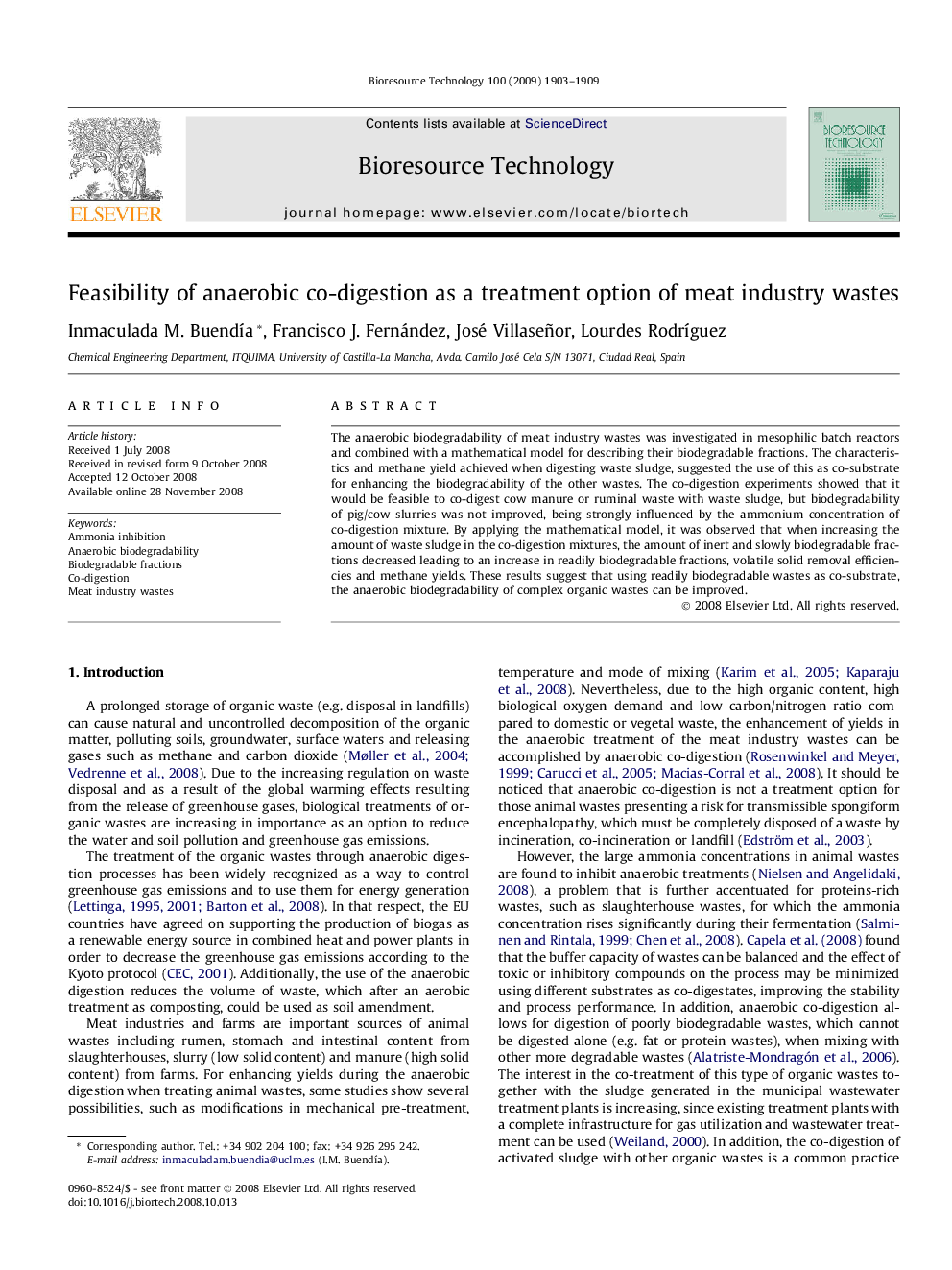| کد مقاله | کد نشریه | سال انتشار | مقاله انگلیسی | نسخه تمام متن |
|---|---|---|---|---|
| 685892 | 889052 | 2009 | 7 صفحه PDF | دانلود رایگان |

The anaerobic biodegradability of meat industry wastes was investigated in mesophilic batch reactors and combined with a mathematical model for describing their biodegradable fractions. The characteristics and methane yield achieved when digesting waste sludge, suggested the use of this as co-substrate for enhancing the biodegradability of the other wastes. The co-digestion experiments showed that it would be feasible to co-digest cow manure or ruminal waste with waste sludge, but biodegradability of pig/cow slurries was not improved, being strongly influenced by the ammonium concentration of co-digestion mixture. By applying the mathematical model, it was observed that when increasing the amount of waste sludge in the co-digestion mixtures, the amount of inert and slowly biodegradable fractions decreased leading to an increase in readily biodegradable fractions, volatile solid removal efficiencies and methane yields. These results suggest that using readily biodegradable wastes as co-substrate, the anaerobic biodegradability of complex organic wastes can be improved.
Journal: Bioresource Technology - Volume 100, Issue 6, March 2009, Pages 1903–1909